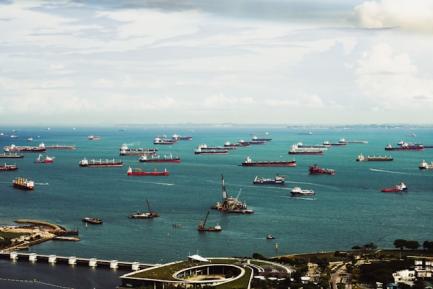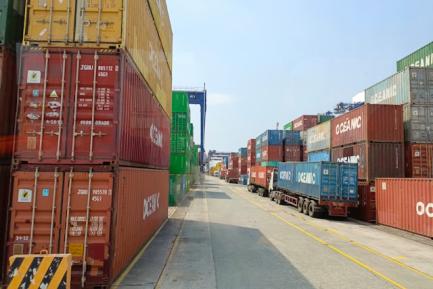
The role of non-tourism services in Spain’s foreign balance
Spain’s foreign sector has registered a surplus for the last 12 consecutive years. The strength of this success was proven last year, when the current account balance survived the energy crisis, which caused a sharp rise in the price of imported energy products and a marked deterioration in the trade balance.
Spain’s foreign sector has registered a surplus for the last 12 consecutive years. The strength of this success was proven last year, when the current account balance survived the energy crisis, which caused a sharp rise in the price of imported energy products and a marked deterioration in the trade balance. This worsening of the balance of goods was offset by the improvement in the tourism surplus thanks to the recovery of tourist flows after the pandemic, but also due to the widening of the surplus in non-tourism services, which climbed to 2.3% of GDP, 5 percentage points above the previous year. The fact is that non-tourism services have been acquiring an increasingly important role in the behaviour of Spain’s foreign balance, and since 2008 they have been registering a surplus. In particular, revenues from non-tourism services have gone from representing 5.1% of GDP in 2014 to 7.1% in 2022, and now account for 16.4% of Spanish exports of goods and services. In this article, we take a look at the performance of the various activities that comprise this category of services.

Types of non-tourism services
When we break down the balance in non-tourism services,1 we see three activities as the major contributors. In order of contribution to the total balance, these are business services, transportation services, and telecommunications, IT and information services.
Business services2 are the largest contributors to the foreign surplus in non-tourism services, with a balance that has expanded to 0.7% of GDP in 2022, up from 0.5% in 2014. They also represent the biggest component of non-tourism revenues, at 34% of the total.
Transportation services, which include both passenger and freight transportation by sea, air, rail and road, have a surplus of 0.6% of GDP, and this balance has remained relatively stable, having stood at 0.5% in 2014. In terms of revenues, this sector accounts for 26% of the total exports of non-tourism services.
Completing the podium are telecommunications, IT and information services, with a balance of 0.4% of GDP, which has remained constant since 2014, albeit with some volatility during this period. This sector contributes 16% of non-tourism service revenues.
However, the «other services» group, which represents a smaller portion of total revenues (19%), stands out for having registered an increase in its surplus, which has gone from 0.1% in 2014 to 0.3% in 2022. This group includes intellectual property services – the only segment with a deficit, although this has halved over the period in question.
- 1Based on the International Trade in Services Survey (ITSS) by the National Statistics Institute, a digital questionnaire in which companies and institutions from different sectors of non-tourism services are asked about their exports/revenues and imports/payments. The survey provides quarterly data covering the period between Q1 2014 and Q4 2022.
- 2Business services comprise the following activities: services related to trade, rents, the transformation and repair of goods, professional and consultancy services in the sphere of business management, R&D services, and technical services in the spheres of architecture, engineering and science.

The fastest-growing sectors
Besides highlighting the sectors which make the biggest contribution to the surplus in non-tourism services, it is also interesting to look at which ones have registered the highest income growth. As can be seen in the first table, the activities which make up the smallest portion of the total have grown at a higher rate, such as in the case of personal, cultural and recreational services (which include educational, health and audiovisual services), with a cumulative growth since 2014 of 121%, or intellectual property services (300%).

Business services, meanwhile, have contributed the most to the growth of non-tourism service revenues, given their high relative weight in the total combined with their significant growth of 92.5% since 2014. All in all, the data show an important pattern: revenues from knowledge-based activities have grown to account for 57% of the total revenues, while the role of sectors more reliant on tangible capital, such as construction or maintenance and repairs, has diminished in terms of their relative weight and buoyancy.
Where do we export to?
Although it is important to analyse the breakdown by type of non-tourism service when trying to explain the pattern followed by this balance in recent years, the geographical breakdown is also of significant interest. As can be seen in the second table, Europe is by far the main destination for the export of these services, accounting for 66% of the total. After Europe, the most important destinations are North and Central America (15%), Asia (8.7%), South America (6.5%), Africa (3.4%) and Oceania (0.4%). This distribution represents a greater geographical diversification than that which exists in the trade of goods, where Europe accounts for 74% of total exports. Also noteworthy is the change in trade dynamics since 2014, with Europe taking on a greater role (+3.7 pps) as well as North and Central America (+2 pps), to the detriment of revenues from South America (–4.3 pps) and, to a lesser extent, Asia (–0.4 pps). The reduced share of revenues generated by South America is linked to the fall in revenues from construction and infrastructure activities in the region, following the significant growth recorded in the first decade of this century.
In short, non-tourism services have become one of the most important factors in offsetting the imbalance of Spain’s trade balance of goods, and this is a reflection of the ever-increasing internationalisation of Spanish service companies, as well as the highly competitive nature of sectors with significant potential for growth which are more linked to knowledge. The greater sophistication, technological content and average productivity found in services such as engineering, consultancy and research and development have allowed their competitiveness to be determined less by price and more by other aspects related to differentiation of the service, innovation and the quality of human capital.




